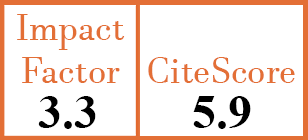Treatment
Long-term treatment of scleroderma-related digital ulcers with iloprost: a cohort study
M. Colaci1, F. Lumetti2, D. Giuggioli3, S. Guiducci4, S. Bellando-Randone5, G. Fiori6, M. Matucci-Cerinic7, C. Ferri8
- Rheumatology Unit, Scleroderma Unit, University of Modena and Reggio Emilia, Modena, Italy. michelecolaci@virgilio.it
- Rheumatology Unit, Scleroderma Unit, University of Modena and Reggio Emilia, Modena, Italy.
- Rheumatology Unit, Scleroderma Unit, University of Modena and Reggio Emilia, Modena, Italy.
- Department of Experimental and Clinical Medicine, University of Florence, and Department of Geriatric Medicine, Division of Rheumatology and Scleroderma Unit AOUC, Florence, Italy.
- Department of Experimental and Clinical Medicine, University of Florence, and Department of Geriatric Medicine, Division of Rheumatology and Scleroderma Unit AOUC, Florence, Italy.
- Department of Experimental and Clinical Medicine, University of Florence, and Department of Geriatric Medicine, Division of Rheumatology and Scleroderma Unit AOUC, Florence, Italy.
- Department of Experimental and Clinical Medicine, University of Florence, and Department of Geriatric Medicine, Division of Rheumatology and Scleroderma Unit AOUC, Florence, Italy.
- Rheumatology Unit, Scleroderma Unit, University of Modena and Reggio Emilia, Modena, Italy.
CER10476
2017 Vol.35, N°4 ,Suppl.106
PI 0179, PF 0183
Treatment
Free to view
(click on article PDF icon to read the article)
PMID: 28980901 [PubMed]
Received: 04/04/2017
Accepted : 11/07/2017
In Press: 18/09/2017
Published: 12/10/2017
Abstract
OBJECTIVES:
Raynaud’s phenomenon and chronic/recurrent digital ulcers (DU) are main features of systemic sclerosis (SSc). Their treatment includes both systemic (i.e., iloprost) and local therapies. We report the therapeutic effects of iloprost in a cohort of SSc patients during a long-lasting follow-up period.
METHODS:
Fifty consecutive SSc patients (M/F 7/43, age at SSc diagnosis 43.5±12.7SD years) received iloprost infusions for 10±4.2SD years. Iloprost schedule consisted in monthly infusion at 0.8-1 ng/kg body weight/min (average cumulative dose 25 μg), according to patients’ tolerance. For recalcitrant cases, continuous infusion of iloprost (3 days, average 0.2 mg) was administered.
RESULTS:
31/50 (62%) patients showed DU at the beginning of iloprost therapy: among them, 22 (71%) resolved during the follow-up, while the other 9 presented recurrent or chronic DU, despite the treatment. With regards the 19/50 patients without DU at baseline, only one developed skin lesions at the end of 10-year follow-up, when severe pulmonary hypertension developed, which lead to exitus. Considering the 31 patients with DU at baseline, a diffuse skin subset was present in 3/22 patients with healed DU, and in 5/9 who did not (13.6% vs. 55.5%; p=0.027).
CONCLUSIONS:
Iloprost is a long-term effective treatment to achieve healing and prevention in SSc-related DU. Besides the possible problems concerning patients’ tolerability or clinical management, iloprost therapy may be considered of great help in the therapeutic strategy of SSc-related ischaemic manifestations.


